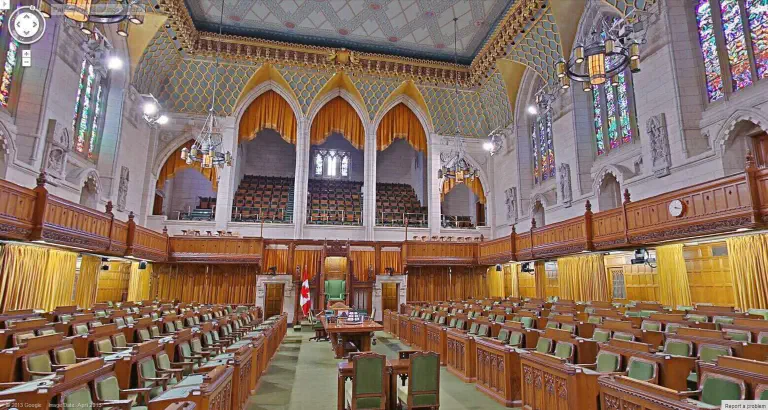Last month, before U.S. election results, I was chatting with a friend about economic political history. He wrote a line that stuck with me. He wrote (Western civilization has got to stop patting itself on the back for separating church and state and get on with the business of separating business and state.) At the time I thought the line might one day just come off (I was thinking of receding lobbyist influence given the likelihood of a democrat government.)
Today after tallying some 1.4 trillion dollars worth of state intervention in the private sector, Rob's line suggests a highly improbable course of action. Business and state are no longer simply lying in the same bed, they've just been married.
The line got me thinking just how close have business and state been? Well, it didn't take long to turn up some information. Here it is:
Though there were likely more, I counted some 7 bailouts between 1970 and 2007, most of them minor. In 1970 the Federal Reserve Board injected some 3.2 billion dollars into the Penn Central Railroad issue (that's not money the treasury needs to pay back, just plain printed money!) The railroad was bankrupt and was unable to pay its commercial paper obligations. The fed stepped up and guaranteed to back financial institutions that were on the hook. Eventually the railroad was consolidated with Conrail, which the U.S. government spent some 19 billion to keep in operation. By 1981 Conrail was turning a profit again and was sold off to private interests. What was the cost to the Federal Reserve? 3.1 billion dollars--a stunning loss.
In 1971 Lockheed was bailed out via the emergency loan guarantee act and 1.4 billion dollars. The idea here was to maintain U.S. national defense and prevent job loss in California. Lockheed paid off the loans and the U.S. government earned some 112 million in loan fees, an 08% profit. Yes, less if one adjusts for inflation on the 6 year time period but hey, at least they didn't lose money!
In 1974 there was the Franklin National Bank bailout of some 7.8 billion dollars, 5.1 billion dollars were earned off the sale of Franklin National Bank assets; however, in the end the Federal Reserve was still owed money. Business 2, state 1 but who's keeping score?
In 1980 the Chrysler loan guarantee act was passed, propping up Chrysler with some 4 billion dollars of American and International government lending. After all was said and done, the American Government made some 660 million, Chrysler bought out the government warrants and Chrysler returned to profitability.
In 1984 for the Federal Reserve put some 9.5 billion dollars into the Continental Illinois National Bank and Trust Company assuming 80% ownership. 7 years later the Fed was able to divest at a loss of 1.8 billion.
In 1989 the savings and loan crisis led to a 220 billion dollar bailout via the Financial Institutions Reform Recovery and Enforcement act. Tax payers covered 178 billion dollars of the above total, cash that is considered a loss.
In 2001 after the September 11 terrorist attacks, the U.S. government bailed out grounded airlines with 18.6 billion in compensation and loan guarantees. In this case (as in the Chrysler guarantee act) government warrants were used and so government was able to earn substantial profits.
As far as I can tell that's a score of 4 to 3 business over state. Meaning, in these arrangements the people have lost 4 out of 7 times. However, as I mentioned the stakes were low in the above, which we might consider comparatively an ongoing tryst between business and state. The following defines the marriage!
This year alone the U.S. government put 200 billion into Fannie Mae and Freddie Mac, allowed JP Morgan and Chase to use a 30 billion dollar line of credit during the purchase of Bear Stearns, put 150 billion into the AIG prop up, put 25 billion in the U.S. Auto industry, put 247 billion into Citi-group and some 800 billion into TARP, the troubled asset relief program! I don't know about you but I figure any marriage with a 1.4 trillion dollar price tag better have some fancy fire works!
Okay, if you're like me, you might find yourself wondering exactly what just happened--how can we be seeing bailout dollar figures that amount to around 10% of 2007 entire GPD or approximately one half of 2007 U.S. government spending?
Most of us have heard the answer but how many people have a good handle on the magnitude of the issue. I certainly didn't! Given I've been on the task, I'll try to recap, and briefly put it into perspective.
It's said that GDP equals the volume of money in the economy multiplied by the velocity of money (number of times money changes hands through transactions over a fixed period of time,) that is to say P=MV. As the quantity of money (m2) is calculable in the rear-view mirror, as is GDP, the velocity of money can be calculated. Recent calculations have shown a significant growth in the velocity of money over the last 10 years (see: http://www.marketoracle.co.uk/Article4482.html )
This growth is attributed largely to innovations in financial products, primarily asset backed commercial paper issues and collateralized debt products (securitized debt instruments.) Ya, loans bundled into investment packages and redistributed globally. As we have all heard many times over, investors internationally failed to look into the investment packages and determine realistic risk evaluations. Consequently, as more houses were built than bought, loans were sold to an increasing number of purchasers without the wherewithal to repay.
Magnitude! Here's something to think about: between 2005 and 2007 the U.S. housing market saw some 6 trillion dollars of mortgages originate (most at roughly 6%.) 6 trillion dollars? Now that's a lot of collateralized debt! In addition, though the aforementioned marriage has helped many home owners refinance (locking in between 5% and 5.5 %,) the lower rates haven't done much to help the 11.8 million borrowers who won't be able to refinance because they owe more than their home is worth. Yep, that's 11.8 million potential defaulters, a number roughly one third the size of Canada's population!
So, with millions of borrowers defaulting on loans, ABCP markets have seized up (again something we are all pretty familiar with,) and the velocity of money has slowed down. Though the U.S. government has taken steps to decrease the supply of available securitized debt products by buying them up, which could get investors purchasing them again and get markets moving, there is no guarantee these measures will work. And given the looming global recession, it doesn't seem likely the velocity of money is going to be restored.
There you have it, Robert English's remark about business and state has got me looking at the bailout issue. But the real question is not what has just happened but rather what's going to happen, ya?
Here's my guess, downward pressure on the American dollar. Efforts to control systemic market failures with quantitative easing have seen 10% of last years American GDP poured into seizing credit markets. One has got to start thinking about increases in money supply (which is said to have been growing at 12% since the beginning of the year.) Not only is there the obvious function of more currency meaning less demand and a lower price, there is as well a familiar concept that is often associated with increases in money supply. Think post WW1 Germany, think Zimbabwe, think inflation!
Despite the idea that the Fed will curb inflation with interest rate hikes before it gets too out of hand and despite popular beliefs that volatile markets will keep up demand for low risk assets (U.S. bond market) keeping the dollar afloat, there is the sheer magnitude of quantitative easing to consider! How likely is it that the Fed will get it right? How far fetched is a return of the CDN dollar to parity by next July--not very.
On the other hand, it might be said a large variable in predicting U.S. dollar movements lies overseas. How foreign central banks deal with the contagion that has spilled into their credit markets will play a large role in not only internationally competitive industries (resource, manufacturing) but also foreign inflation expectations. If inflationary pressures overseas increase, perhaps the American dollar will remain relatively attractive? But then there's the wave analogy---aren't waves always smaller when farther from the splash! I'm still guessing the issue will have its biggest impact closest to home.

















